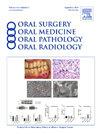Presentation of rare genetic disorders: case series using segmented 3-dimensional (3D) models from cone beam computed tomography
IF 2
3区 医学
Q2 DENTISTRY, ORAL SURGERY & MEDICINE
Oral Surgery Oral Medicine Oral Pathology Oral Radiology
Pub Date : 2025-02-04
DOI:10.1016/j.oooo.2024.11.058
引用次数: 0
Abstract
Objective
This abstract presents a case report and case series showcasing the use of segmented 3-dimensional (3D) models to identify key features in achondroplasia, Goldenhar syndrome, ectodermal dysplasia, and Down syndrome, without relying on clinical information.
Clinical Presentation
Instead of providing clinical details, this study focuses solely on the visual representation of segmented 3D models derived from cone beam computed tomography imaging. Each model accurately represents the unique facial characteristics associated with achondroplasia, Goldenhar syndrome, ectodermal dysplasia, and Down syndrome.
Differential Diagnosis
The differential diagnosis section is omitted from this abstract since the purpose is to showcase the visual representation of the syndromes rather than discussing potential diagnostic possibilities.
Diagnosis and Management
The histopathologic findings and treatment outcomes are not discussed in this abstract, as the focus is on utilizing segmented 3D models to identify distinct features of each syndrome.
Conclusion
This abstract highlights the use of segmented 3D models to visually represent achondroplasia, Goldenhar syndrome, ectodermal dysplasia, and Down syndrome. By visually presenting the unique facial characteristics associated with these syndromes, the models contribute to a better understanding and recognition of these rare genetic disorders. The use of segmented 3D models has the potential to enhance diagnosis, education, and research in the field of genetic syndromes.
求助全文
约1分钟内获得全文
求助全文
来源期刊

Oral Surgery Oral Medicine Oral Pathology Oral Radiology
DENTISTRY, ORAL SURGERY & MEDICINE-
CiteScore
3.80
自引率
6.90%
发文量
1217
审稿时长
2-4 weeks
期刊介绍:
Oral Surgery, Oral Medicine, Oral Pathology and Oral Radiology is required reading for anyone in the fields of oral surgery, oral medicine, oral pathology, oral radiology or advanced general practice dentistry. It is the only major dental journal that provides a practical and complete overview of the medical and surgical techniques of dental practice in four areas. Topics covered include such current issues as dental implants, treatment of HIV-infected patients, and evaluation and treatment of TMJ disorders. The official publication for nine societies, the Journal is recommended for initial purchase in the Brandon Hill study, Selected List of Books and Journals for the Small Medical Library.
 求助内容:
求助内容: 应助结果提醒方式:
应助结果提醒方式:


